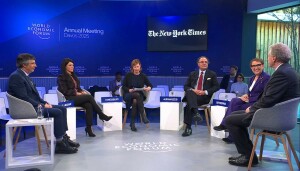Remittances to Pakistan grew by 10.7 percent year-on-year in FY24 to $30.3 billion. The annual tally is the second highest in the country’s history at $30.3 billion in FY24 after $31.2 billion in FY22. Remittances during June 24, the last month of the fiscal year stood at $3.16 billion, up by 44 percent on a year-on-year basis, but down by 3 percent on a month-on-month basis.
The growth in remittances was largely led by growth in inflows from the Middle East especially Saudi Arabia and the UAE. Overseas Pakistanis in Saudi Arabia remitted the largest amount during the month, which was up by 57 percent year-on-year, but flattish on a month-on-month basis. Remittances from the United Arab Emirates (UAE) declined by two percent on a monthly basis but jumped by double on a yearly basis. Together, the two countries contributed to over 46 percent of the total remittances to Pakistan. Overall, remittances from all key host countries including KSA, UAE, the UK, the USA, and the EU witnessed growth in FY24 versus the previous year.

According to a recent report titled ‘Understanding the drivers of remittances to Pakistan’ by the Asian Development Bank, macroeconomic variables including domestic inflation, oil prices, and economic activity in both the home and host nations have a substantial impact on remittance growth in Pakistan. The remittance rise in FY24 was likely aided by a little improvement in economic activity compared to FY23. Also, remittances are positively affected by increased domestic inflation because migrants send more money to make up for their families’ declining incomes. The research goes on to say that, although higher domestic interest rates do reduce remittances at first, the trend reverses with time, indicating that migrants send more money home to take advantage of better investment opportunities.

Key remittance-sending countries are thoroughly examined in the study. Remittances increase as oil prices rise. Since the bulk of Pakistan’s remittances come from oil-rich countries like the GCC globe, the UAE, and the Kingdom of Saudi Arabia, the higher oil prices in FY24 pushed remittances to Pakistan. The US is more affected by stock market fluctuations and financial instability, whereas Saudi Arabia is more affected by economic activity and global oil prices. Remittances from the US reveal that migrants send more money home when the US stock market does well, indicating that the host country’s economy is doing well. Migrants may increase their remittances during times of uncertainty to protect themselves from prospective losses.

While all this may be true, one must not forget that rising inflation and unemployment could backfire on the rising remittance trend. More than ever, fiscal independence and foreign currency are required due to the impending start of the new IMF program’s upfront conditions. It’s great to see more remittances, but trends can reverse, and interest rates will not have a lasting impact on Pakistan.


























Comments
Comments are closed.